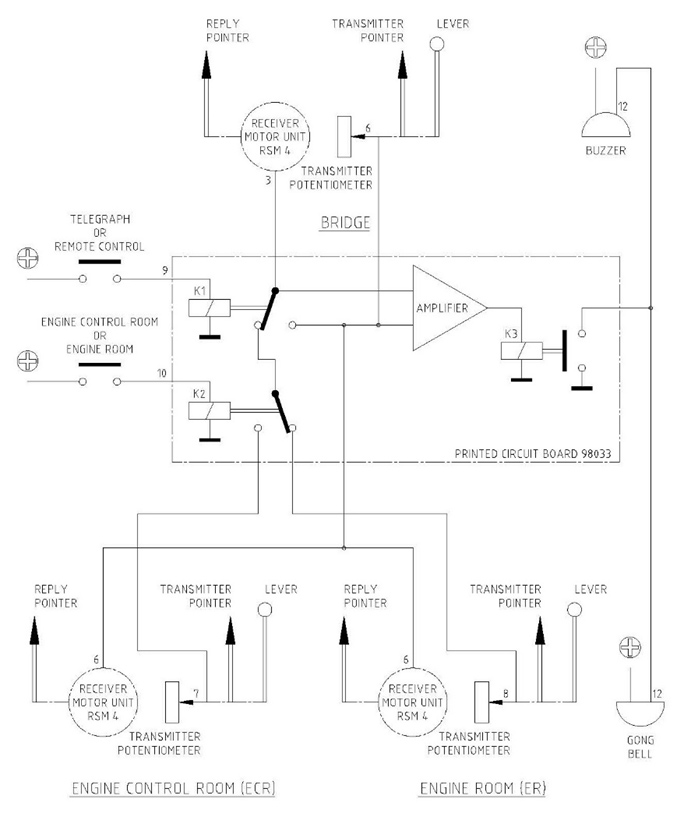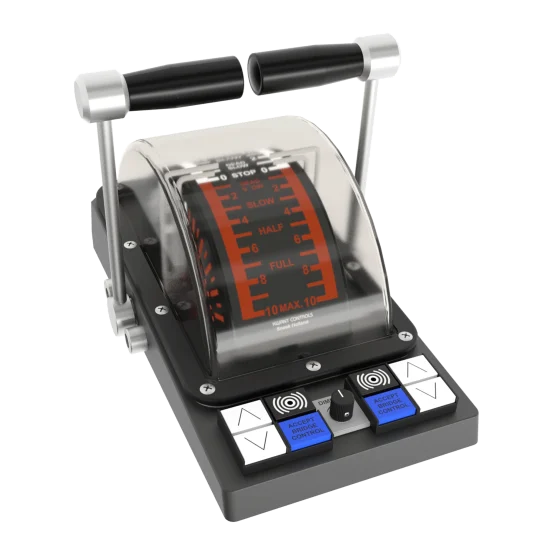Description
Specs
IP level Pointer WD: IP56
The bridge- and ECR or ER transmitter potentiometers are connected to the amplifier inputs, and to the receiver motor units of the other position. With both command levers in the same position, there will be no voltage at the amplifier output and the alarm will be off.
When either command lever is moved, the output will be driven high and the alarm will sound. Relay K2 selects which position is on service, relay K1 selects either R.C. or telegraph mode.


